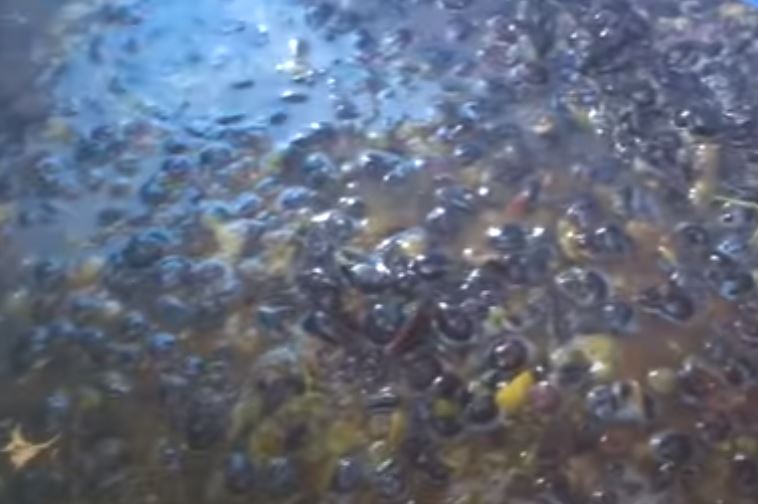The maceration of wine must is a process in which lightly squeezed grapes are soaked in their own liquid. Maceration is one of the early steps in wine production, which occurs in the wine cellar immediately after the arrival of the clusters from the vineyard to the cellar and after the partial pressing of the wine clusters. You could also call it “irrigation.” During maceration, the must from the cluster’s skin, and seeds acquires flavors, color, and tannins. Macerated (soaked) are mostly only red wines, which also get their red color during maceration. If the winemaker macerates white grapes, he will get an orange color wine, orange wine, or macerated white wine.
The dissolution of the ingredients lasts throughout the maceration and is peaked when the mash is squeezed. Anyway, we find that the dyes reach the highest level on the 4th or 5th day of maceration. From there, the color of the must or wine even decreases. However, if the grapes are not stalked, many dyes adhere to stalks (on dead stalk tissue), and this color is lost. In many places, stalking is a constant practice. In the Mediterranean, where tannin-rich wines are sought after, the practice is different. In the blue variety, pinot often does not stalk grapes but only mashes them. It is an even better choice for prolonged maceration.
Maceration of Wine Must for Red Wine
The maceration of red wines lasts from 2 to 4 weeks. After the maceration is completed, the winemaker finally squeezes and filters the slurry to obtain a clear liquid (must) without any solid particles. During maceration, boiling also takes place when alcohol is formed from sugar. During the maceration process, tannins are transferred from the stalks, seeds, and skins to the must, which is very important for the wine’s character and helps in the healthy aging of the wine.
At the same time, maceration is that part of vinification when the winemaker adds yeasts and sulfites to the must.
During maceration, the must is colored and acquires color from wineberries skins. The juice of red grapes is bright; all the red color is hidden in the grape’s skin.
If we macerate red grapes for a very short time (from a few hours to a few days), we get rosé wine.
Different Types of Maceration
There are several maceration types, which mainly differ in the temperature where they take place. The most well-known is cold maceration, where at low temperatures, they prevent the must from fermenting during fermentation and cause an even more intense red color of the wine. Carbon maceration is also quite important for winemaking, as it is only suitable for very healthy and whole grapes and takes place in closed containers.
Red Wine Production Process:
- Squeezing the bunches (crush the grapes to release the liquid from the berries)
- Maceration (total liquid must and solid stalks, pips, and skins) must acquire a red color at this stage
- Pressing and filtering (obtaining liquid, discarding solid parts)
- Aging (in barrels)
- Bottling (transfer from soda to bottles)
The red color in red wine comes from the clusters’ skins during maceration. The core of red grapes and the juice of red grapes are light in color. Only the foreskin is red.
Maceration Containers for Maceration of Wine Must
The production of red wines is characterized by fermented grapes fermenting for some time together with berry skins. Two high-quality processes, alcoholic fermentation and maceration (excretion) of grape berry skins. The classic container for this important phase is an open tub. The leaching of valuable ingredients from the grape berry skin into the must is more intensive if the grape berry skin contacts the must. Therefore, they are dived several times a day (three to five times) because they are lifted to the surface by CO2 gas and subjected to drying and oxidation.
